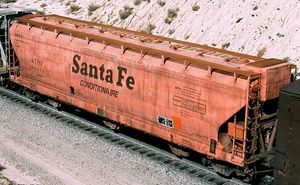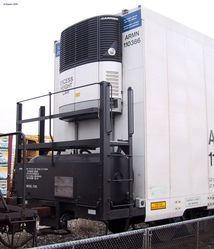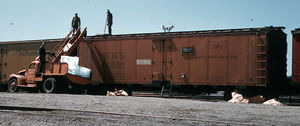Refrigerator car/Gallery: Difference between revisions
imported>Robert A. Estremo (add images) |
imported>Robert A. Estremo (add images) |
||
| Line 33: | Line 33: | ||
Image:Kuehlwagen Interfrigo.jpg|{{Kuehlwagen Interfrigo.jpg/credit}}<br />Outside of North America, railroad cars which have been outfitted with cooling equipment (and designated as Class "I" by the International Union of Railways [UIC]) are generally referred to as "refrigerated vans." | Image:Kuehlwagen Interfrigo.jpg|{{Kuehlwagen Interfrigo.jpg/credit}}<br />Outside of North America, railroad cars which have been outfitted with cooling equipment (and designated as Class "I" by the International Union of Railways [UIC]) are generally referred to as "refrigerated vans." | ||
Image:ATSF Conditionaire 101438.jpg|{{ATSF Conditionaire 101438.jpg/credit}}<br />ATSF #101438, one of a hundred specially-built "Conditionaire" centerflow hoppers operated by the Atchison, Topeka and Santa Fe Railway in the early 1970s. | Image:ATSF Conditionaire 101438.jpg|{{ATSF Conditionaire 101438.jpg/credit}}<br />ATSF #101438, one of a hundred specially-built "Conditionaire" centerflow hoppers operated by the Atchison, Topeka and Santa Fe Railway in the early 1970s. | ||
Image:ARMN 110386 detail.jpg|{{ARMN 110386 detail.jpg/credit}}<br />State-of-the-art mechanical refrigerator car designs place the removable, end-mounted refrigeration unit outside of the freight compartment in order to facilitate access for servicing or replacement. | |||
Image:MDT-GMO 12530.jpg|{{MDT-GMO 12530.jpg/credit}}<br />An early version of a field icing car loads a Merchants Despatch Transportation Co. reefer (bearing the herald of the GM&O) in Norfolk, Virginia in April 1955. | |||
</gallery> | </gallery> | ||
==Notes and references== | ==Notes and references== | ||
Revision as of 12:42, 14 August 2013
(PD) Engraving: Railroad Gazette
This engraving of Tiffany's original "Summer and Winter Car" appeared in the Railroad Gazette just before Joel Tiffany received his refrigerator car patent in July, 1877. Tiffany's design mounted the ice tank in a clerestory atop the car's roof, and relied on a train's motion to circulate cool air throughout the cargo space.(PD) Photo: Smithsonian Institution
A Pullman-built "shorty" reefer bears the Armour Packing Co. · Kansas City logo, circa 1885. The name of the "patentee" was displayed on the car's exterior, a practice intended to "... impress the shipper and intimidate the competition ...," even though most patents covered trivial or already-established design concepts.(PD) Photo: American Car and Foundry Company
A rare double-door refrigerator car utilized the "Hanrahan System of Automatic Refrigeration" as built by ACF, circa 1898. The car had a single, centrally located ice bunker which was said to offer better cold air distribution. The two segregated cold rooms were well suited for less-than-carload (LCL) shipments.(PD) Photo: Chicago Historical Society
A builder's photo of one of the first refrigerator cars to come out of the Detroit plant of the American Car and Foundry Company (ACF), built in 1899 for the Swift Refrigerator Line.Template:Ice Harvesting on Lake St Clair Michigan circa 1905.jpg
Men harvest ice on Michigan's Lake Saint Clair, circa 1905. The ice would be cut into blocks and hauled by wagon to a cold storage warehouse, and held until needed.(PD) Photo: American Car and Foundry Company
A pre-1911 "shorty" reefer bears an advertisement for Anheuser-Busch's Malt Nutrine tonic. The use of similar "billboard" advertising on freight cars was banned by the Interstate Commerce Commission in 1937, and thereafter cars so decorated could no longer be accepted for interchange between roads.(PD) Photo: Swift Brands
A view of the Swift Brands Sioux City, Iowa meat packing plant, circa 1917. All but one of the refrigerator cars in the photo bear the markings of the Swift Refrigerator Line.© Image: Orange Public Library
A crate label for Hewes' Transcontinental Brand of El Modena, California, circa 1930 depicts a trainload of Pacific Fruit Express (PFE) ventilated refrigerator cars passing near San Francisco Bay.(PD) Photo: William B. Barry
A Swift refrigerator car has reached the end-of-the-line at East Orange, New Jersey. The car has been repainted and was photographed in mid- or late-1937, after the use of "billboard" advertising on freight cars had been banned by the Interstate Commerce Commission, and such cars could no longer be accepted for interchange between roads.


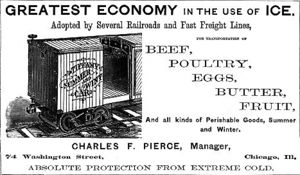
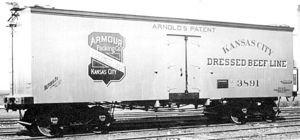


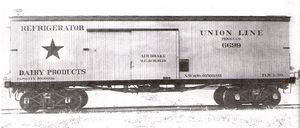



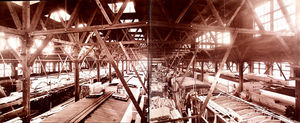
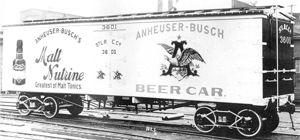
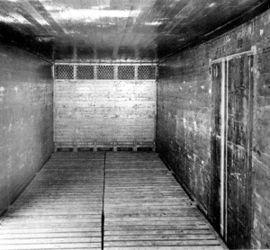
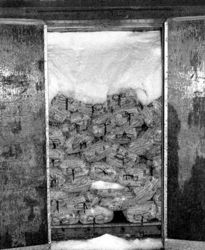


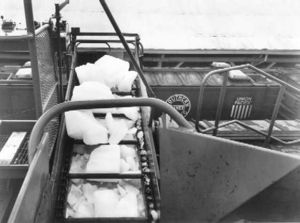
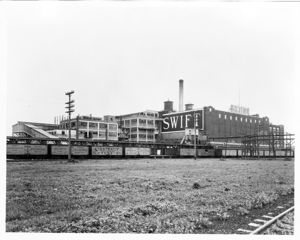
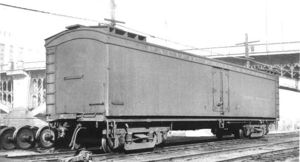


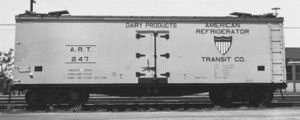
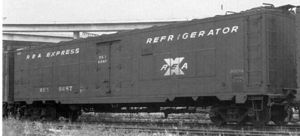
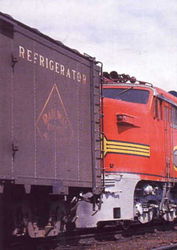
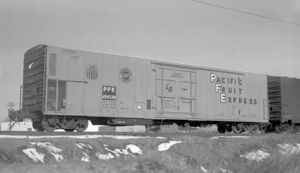
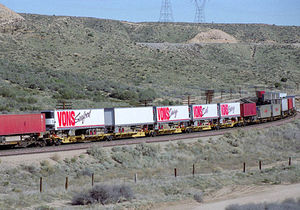
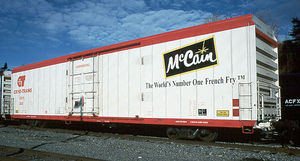
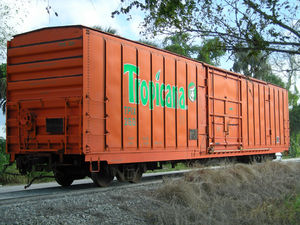

![(PD) Photo: Garitzko Outside of North America, railroad cars which have been outfitted with cooling equipment (and designated as Class "I" by the International Union of Railways [UIC]) are generally referred to as "refrigerated vans."](/wiki/images/thumb/9/92/Kuehlwagen_Interfrigo.jpg/300px-Kuehlwagen_Interfrigo.jpg)
